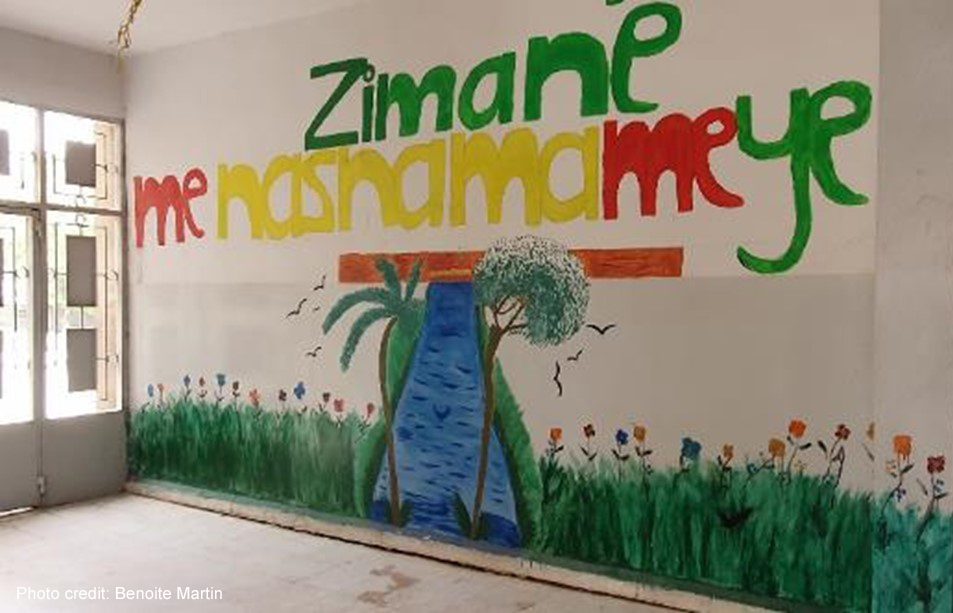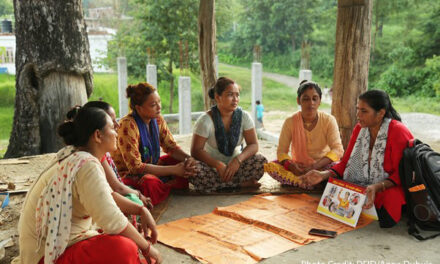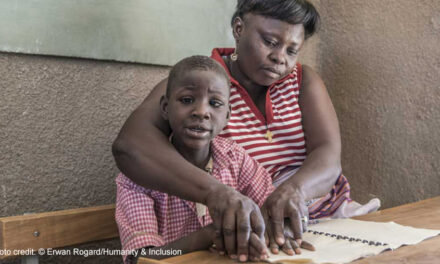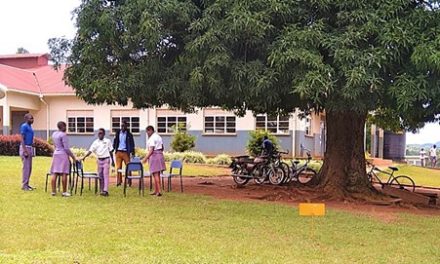This blog was written by Benoite Martin, PhD researcher at Ulster University.
Through my PhD research, I have been brought to closely look at the developing education crisis in Northeast Syria. I provide below an introduction to the evolution of education policies in the region.
Introduction to the context in Northeast Syria
As Syrians took to the streets in 2011 to demand rights, freedom and dignity, they faced an unleashing of violence by the Assad Regime. The popular uprising rapidly turned into a protracted conflict with led to the fracture of the central Syrian State. The large ethnic and religious diversity present in Northeast Syria is a source of tensions which have roots in past discriminatory policies towards Kurdish communities.
Northeast Syria gained de facto autonomy in 2012. The Kurdish-led self-governance project places universalist values of democracy, gender equality and respect for human rights and diversity at its core. Inspired by political theories of Ocalan (leader of the Kurdistan Workers’ Party), it has often been portrayed as an utopian alternative model initiating a political and social revolution.
However over the years, the Autonomous Administration of North and East Syria (AANES) has become increasingly criticised, due to an inefficient opaque governance system that has become increasingly authoritarian and lacks genuine participation of the various communities living in Northeast Syria.
Evolution of education policies in Northeast Syria
Education under the Baath party rule is characterised by indoctrination policies that aim to mobilise students in support of the Baath party. Strict discipline and control measures are imposed within schools. While education has sought to promote the existence of a unique Arab identity, assimilation policies severely restrict the expression of other identities. Northeast Syria was an area of Syria that was historically marginalised, with limited investments in financial or social structures. With Kurdish communities living along border areas with Iraq and Turkey seen as a threat to Syria’s unity and territorial integrity, policies to instill ignorance were implemented to prevent access to education to ensure local communities would not become “ideologically motivated”. This translated to a limited education infrastructure existing in this part of Syria.
In 2012, as the Assad Regime withdrew from Northeast Syria, the teaching of the Kurdish language, which was previously forbidden in Syria, was introduced for the first time in local public schools.
In 2015, the Autonomous Administration in North and East Syria (AANES) reformed the education system: it introduced mother-tongue education and aimed to change the pedagogy, structure and atmosphere of the education system. New multi-lingual school textbooks were rolled out, allowing children to learn in Kurdish, Arabic or Syriac language. In response, the Assad Regime closed schools which were immediately taken over and continued to be administered by the AANES since then.
Autonomous Administration education policies
Education policies developed by the AANES aim to make a radical shift away from nationalist, assimilationist, discriminatory and patriarchal educational policies of the Baath Party. While under Baath party rule, minority communities are oppressed and assimilated, the AANES seeks to raise consciousness towards mechanisms of oppression and promote diversity. While under the Baath party, education is a one-direction process with the teacher giving the knowledge and students required to memorise by heart, the AANES rather views education as a dialogue between the teacher and his/her students that results in the production of knowledge.
Through its education policies, the AANES seeks to engage what they see as a “mentality revolution”, allowing to build citizens who are able to fully engage and participate in the building of a new social organisation which promotes grassroot democracy.
The AANES offers free public education in order to ensure equal access to knowledge, regardless of socio-economic disparities. In an aim to promote educational justice, it has introduced mother-tongue education and diversity, gender equality and ecology are principles embedded in the school curriculum.
New pedagogies and ethos promote the engagement and active participation of students in the life of the school and in the classroom by encouraging them to engage with teachers, ask questions, conduct research projects, etc. New evaluation systems do not depend only on the retention of knowledge by students and value the attitude and behaviours of the students and his/her level of engagement during lectures.
Current reality of the AANES education system
The education system run by the AANES faces a number of severe challenges that have highly impacted the quality of education delivered in AANES-run schools:
- Lack of recognition: The AANES has not been officially recognised by the international community. This means that its education system remains to this day unaccredited. As school certificates it delivers are unrecognised, students taking AANES education are unable to pursue higher education in universities in other parts of Syria or outside Syria.
- Weak capacity and experience of teachers: With many experienced teachers refusing to work for the AANES due to security concerns or having emigrated outside of Syria, many teachers recruited by the AANES had no previous teaching experience and low education certificates negatively impacting the quality of education delivered in AANES schools.
- Unstable security situation: With threats and security concerns emanating from Turkey, Turkey-backed armed groups, ISIS sleeping cells or Assad Regime forces, military operations, attacks and armed clashes regularly interrupt the provision of education across AANES-controlled areas. As control over some geographical areas changes over time, schools are often forced to close and re-open teaching a new curriculum as occurred for example in Afrin or Ras-El-Ain.
- Specific challenges in Raqqa and Deir-ez-Zor: Following large-scale military operations occurring in both cities to oust ISIS, local infrastructure was heavily destroyed, including school buildings. Needs to reconstruct schools are enormous while children have been heavily impacted by trauma and require dedicated support to address their well-being.
New educational policies imposed by the AANES remain controversial. Many community members have refused to enrol their children in AANES schools and have sought instead education in the few available institutions that continue to teach the Syrian government curriculum developed by the Baath Party.
In my PhD research, I analyse perceptions of community members representing the three major ethnic and religious groups living in Northeast Syria (Kurds, Arabs and Christians) towards the AANES education. Using the 4Rs analysis framework developed by Novelli, Lopes-Cardozo and Smith (recognition, redistribution, representation and reconciliation), I examine how education provided by the AANES contributes to transformations towards social justice, and how it also contributes to fueling some grievances. As parallel education systems are now running in Northeast Syria, I proceed to analyse what the factors are that community members take into account to guide their school choices in Northeast Syria.





